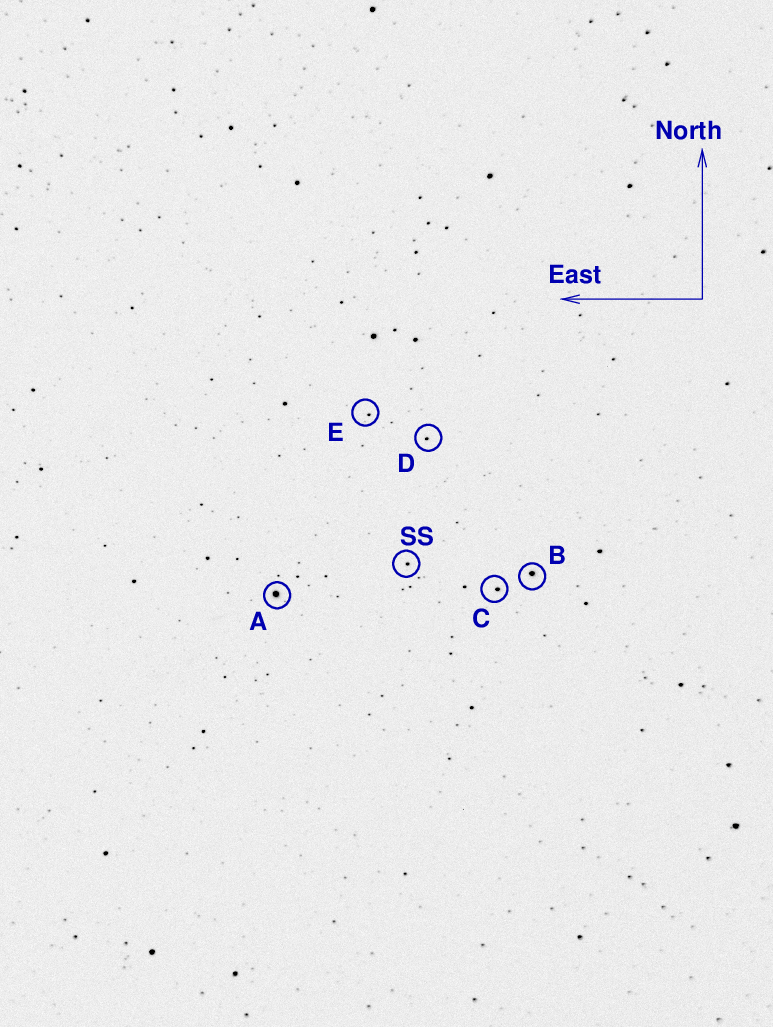
On the night of Jun 04/05, 2024, under good conditions, I acquired images of the cataclysmic variable star SS Cyg. This star has just (Jun 02) started its outburst (yay!), and the operators of the XRISM satellite would like to start observing it as soon as it brightens. The AAVSO has posted Alert 858 asking observers to monitor it frequently.
I acquired images in B and V passbands for about 3.5 hours. The star dimmed just a tiny bit compared to last night, with V = 8.9 or so.
This cataclysmic variable brightens by about 4 magnitudes every two months or so, from mag 12 to about mag 8.
These observations involved:
Notes from the night:
The picture below shows an image of the field of SS Cyg from May 30/31. The field of view is about 22 arcminutes across.

I've marked the location of several comparison stars, with magnitudes and names taken from the AAVSO's chart.
star name B V
------------------------------------------------------
A 000-BCP-235 9.872 8.556
B 000-BCP-198 10.162 9.974
--------------------------------------------------------------------------
When the target is centered, the finder TV shows this field:
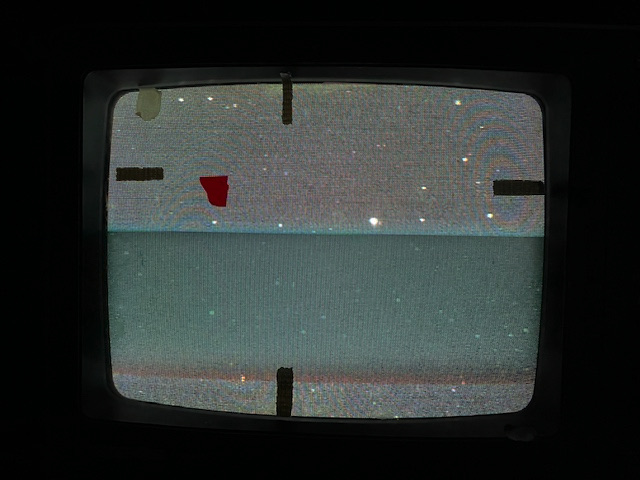
Here's the sky background over the course of the run. The were some very thin clouds early.
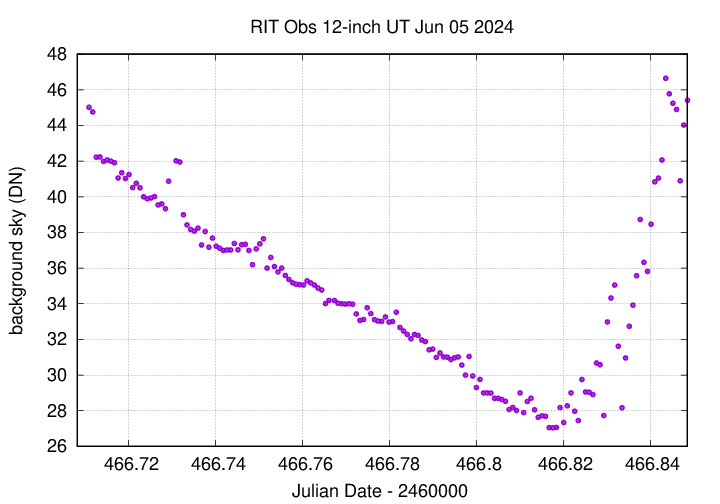
The FWHM degraded slightly over the run.
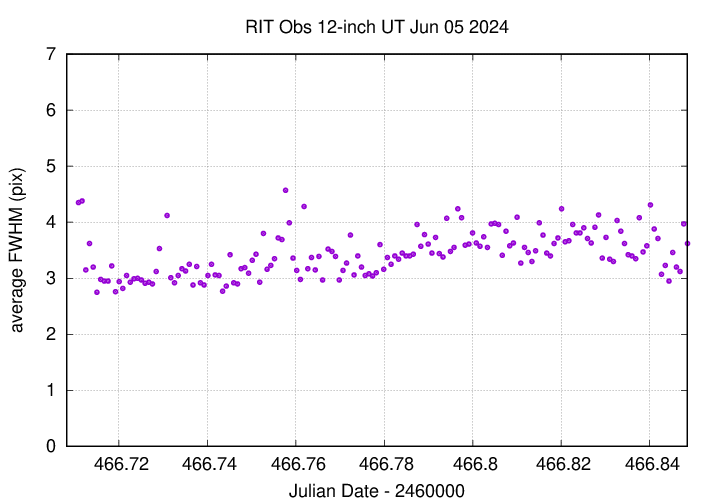
The graph below shows changes in the photometric zeropoint of an ensemble solution of the imstrumental magnitudes over the course of the run. The jump at the end is due to the clouds which covered most the sky before dawn.
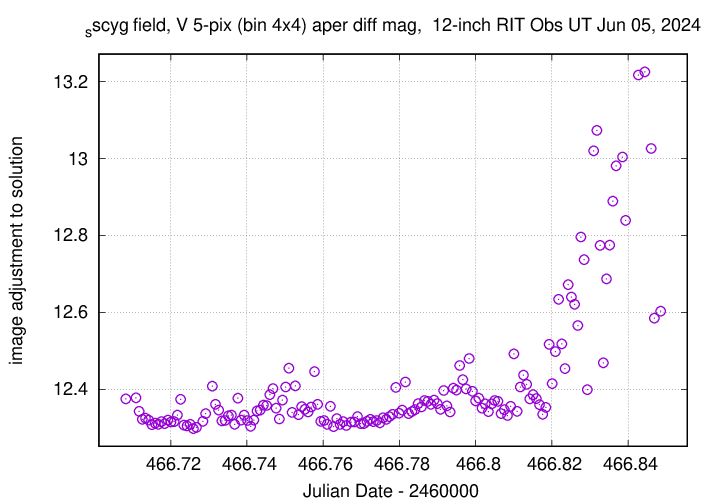
Using aperture photometry with a radius of 5 pixels in V filter (binned 4x4, each pixel is 1.052 arcsec, so a radius of 5.3 arcsec), and 7 pixels in B filter (binned 4x4, each pixel is 1.052 arcsec, so a radius of 7.4 arcsec), I measured the instrumental magnitudes of a number of reference stars and the target. Following the procedures outlined by Kent Honeycutt's article on inhomogeneous ensemble photometry, I used all stars available in each image to define a reference frame, and measured each star against this frame.
Sigma-vs-mag plots show that the floor in V-band was about 0.006 mag, which is okay. It was 0.005 in B-band.
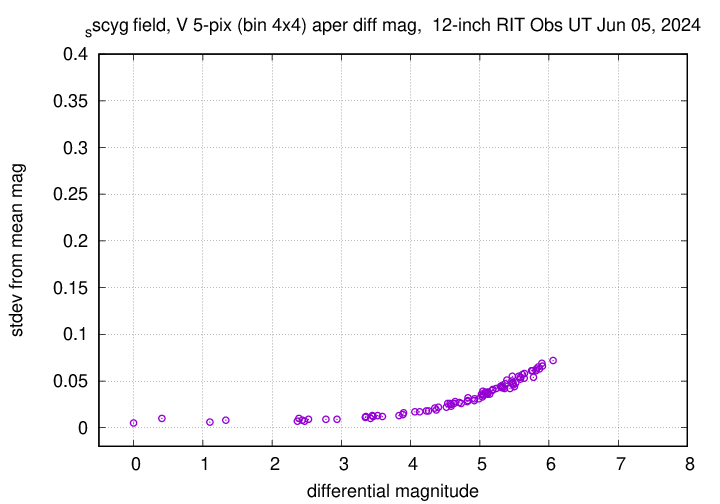
The measurements show a nearly steady brightness, fading slightly at the end. There are no significant short-term variations that I can see. The object may have passed the peak of the outburst.
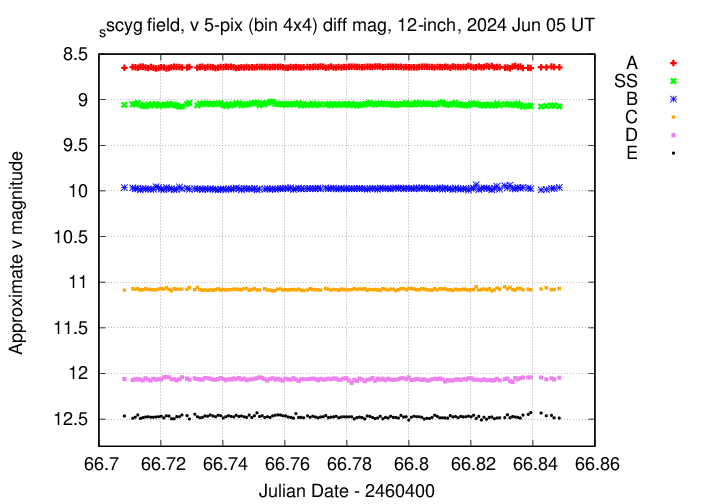
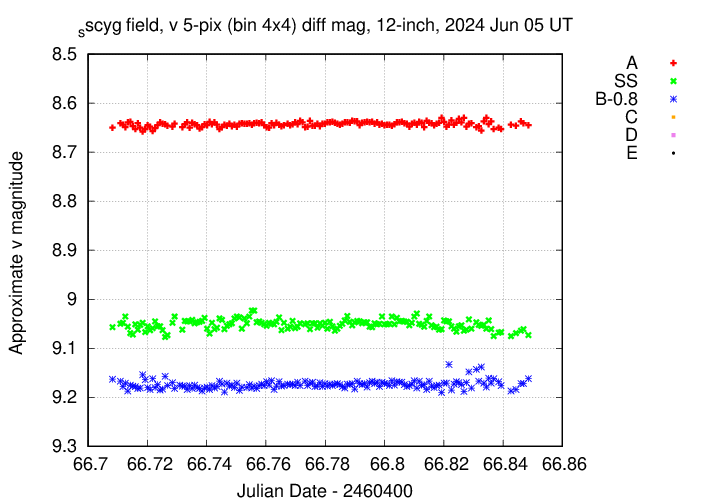
You can download my measurements below. A copy of the header of the file is shown to explain the format. First, the V-band data.
# Measurements of SS_Cyg made at RIT Obs, UT 2024 Jun 5, # in good conditions, # by Michael Richmond, # using Meade 12-inch LX200 and ASI 6200MM. # Exposures 12 seconds long, v filter. # Tabulated times are midexposure (FITS header time - half exposure length) # and accurate only to +/- 1 second (??). # 'mag' is a differential magnitude based on ensemble photometry # using a circular aperture of radius 5 pix = 5.2 arcseconds. # which has been shifted so AAVSO 000-BCP-198 has mag=9.794 # which is its V-band magnitude according to AAVSO chart X36666LX. # # UT_day JD HJD mag uncert Jun05.20819 2460466.70819 2460466.70783 8.877 0.005 Jun05.21087 2460466.71087 2460466.71051 8.870 0.005 Jun05.21170 2460466.71170 2460466.71134 8.868 0.005
Now, the B-band data.
# Measurements of SS_Cyg made at RIT Obs, UT 2024 Jun 5, # in good conditions, # by Michael Richmond, # using Meade 12-inch LX200 and ASI 6200MM. # Exposures 30 seconds long, B filter. # Tabulated times are midexposure (FITS header time - half exposure length) # and accurate only to +/- 1 second (??). # 'mag' is a differential magnitude based on ensemble photometry # using a circular aperture of radius 7 pix = 7.2 arcseconds. # which has been shifted so AAVSO 000-BCP-198 has mag=10.162 # which is its B-band magnitude according to AAVSO chart X36666LX. # # UT_day JD HJD mag uncert Jun05.21128 2460466.71128 2460466.71092 8.913 0.005 Jun05.21212 2460466.71212 2460466.71176 8.935 0.005 Jun05.21295 2460466.71295 2460466.71259 8.919 0.005
I've submitted these measurements to the AAVSO and to VSNet.